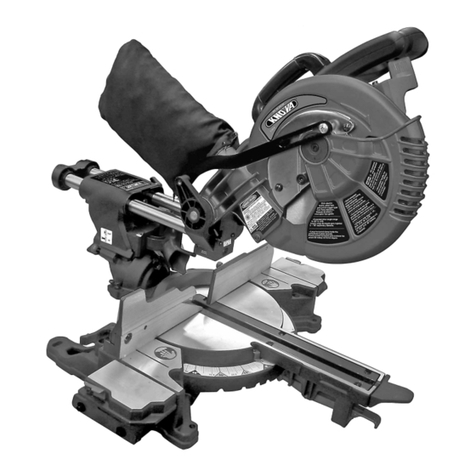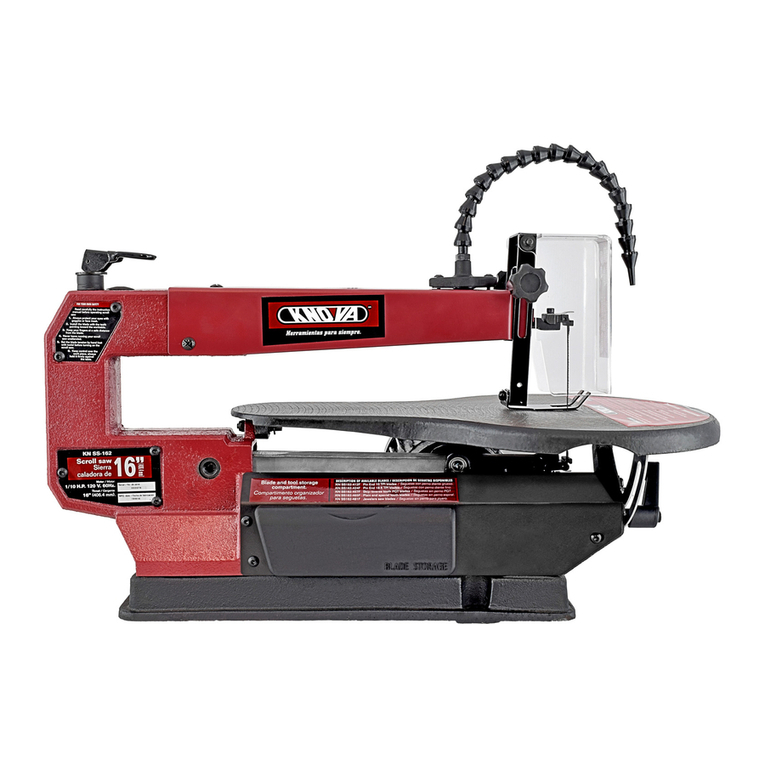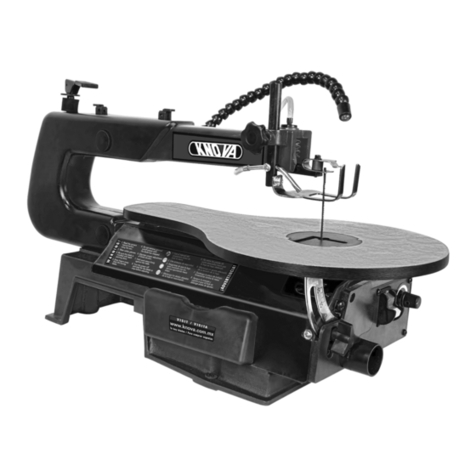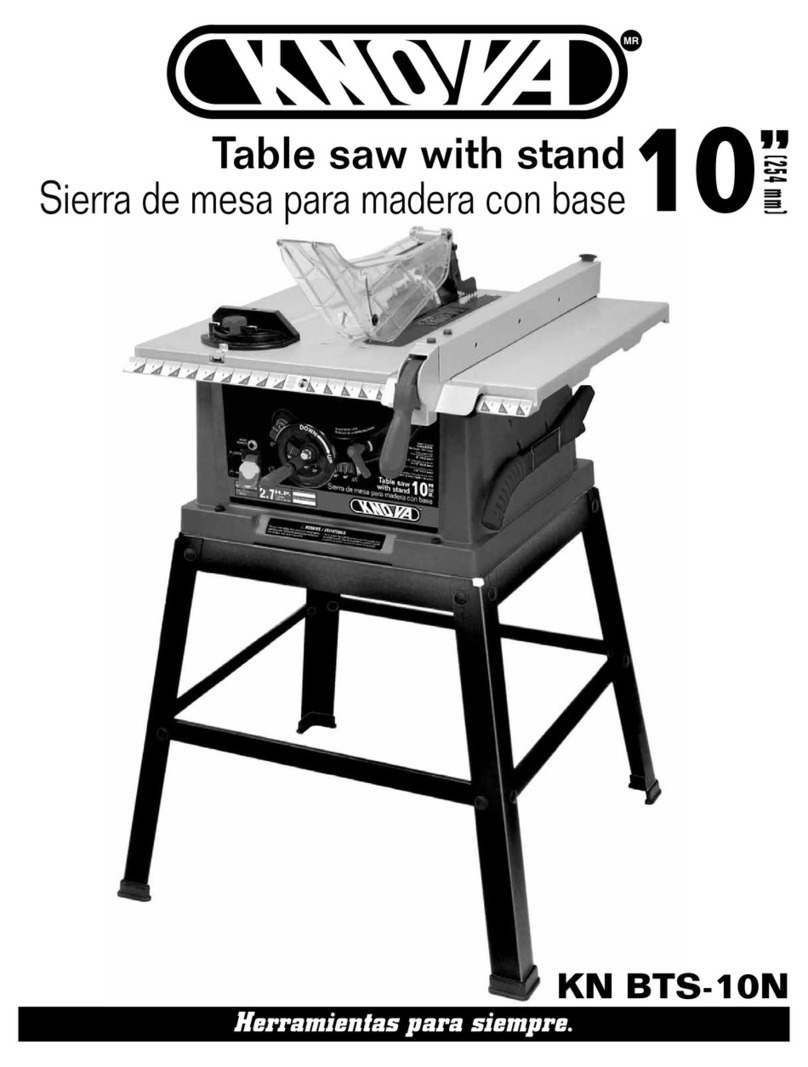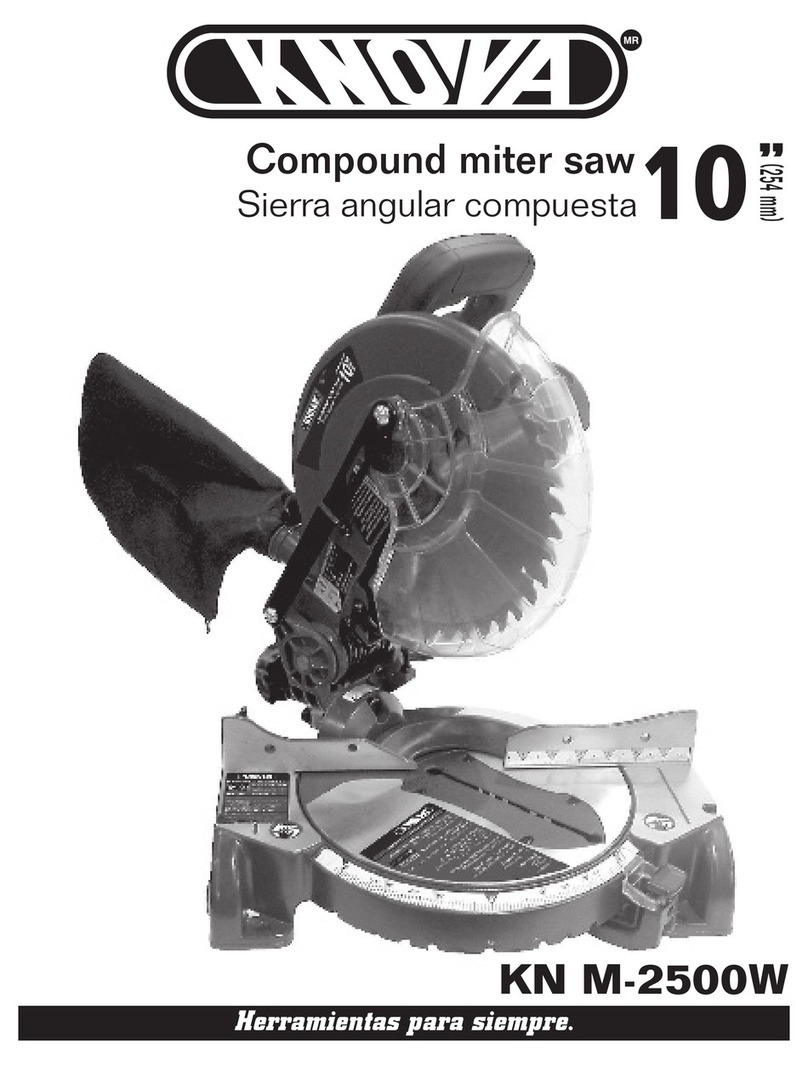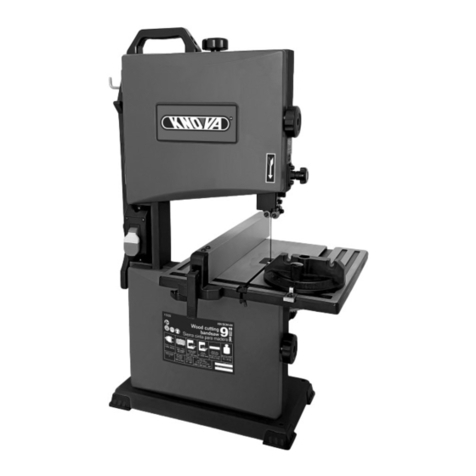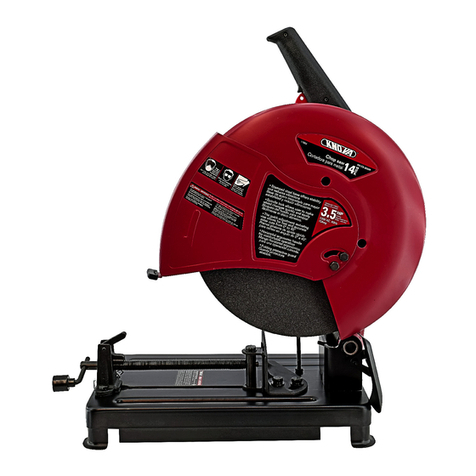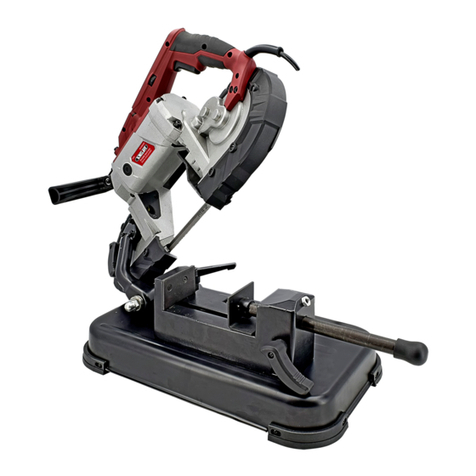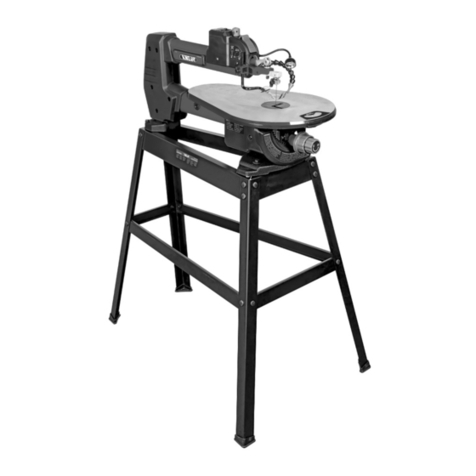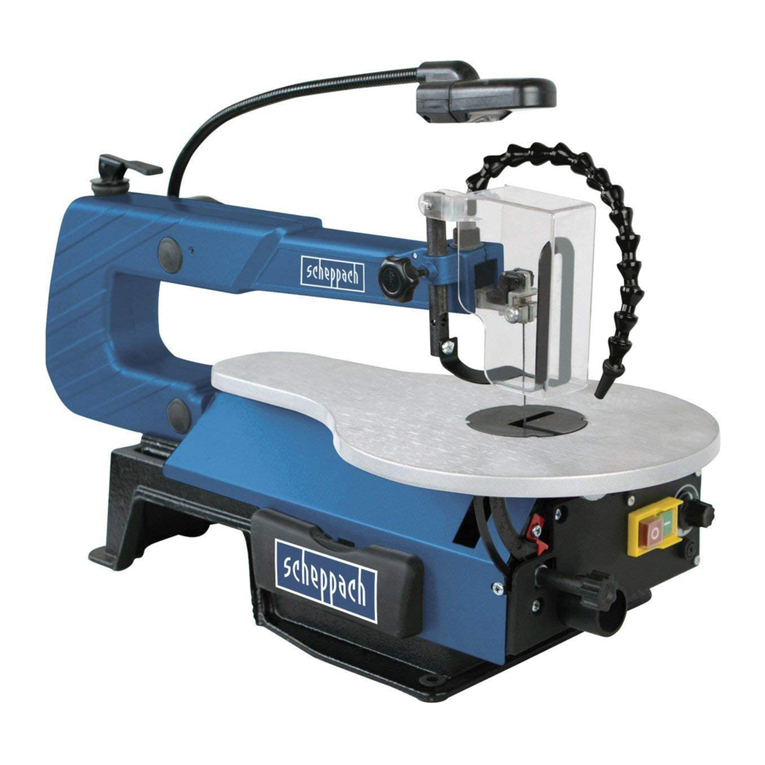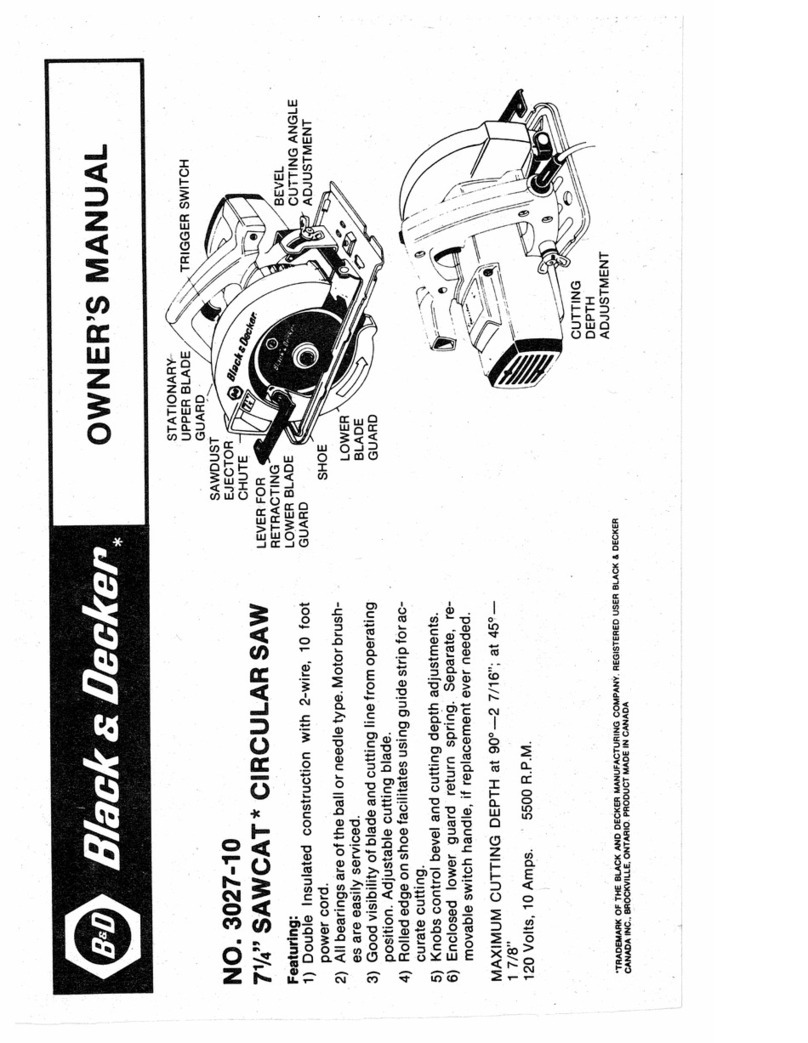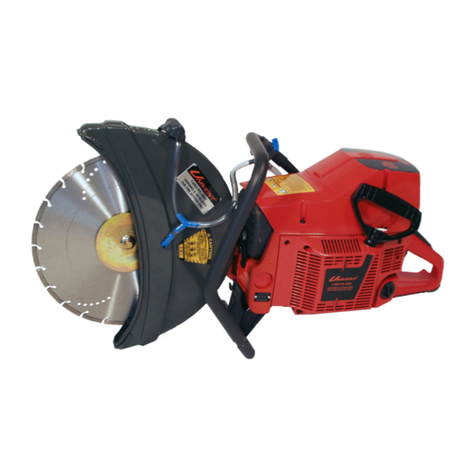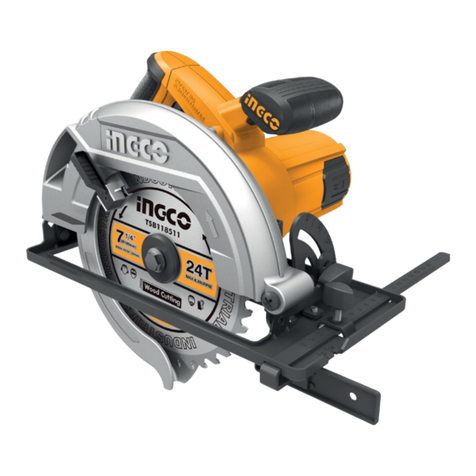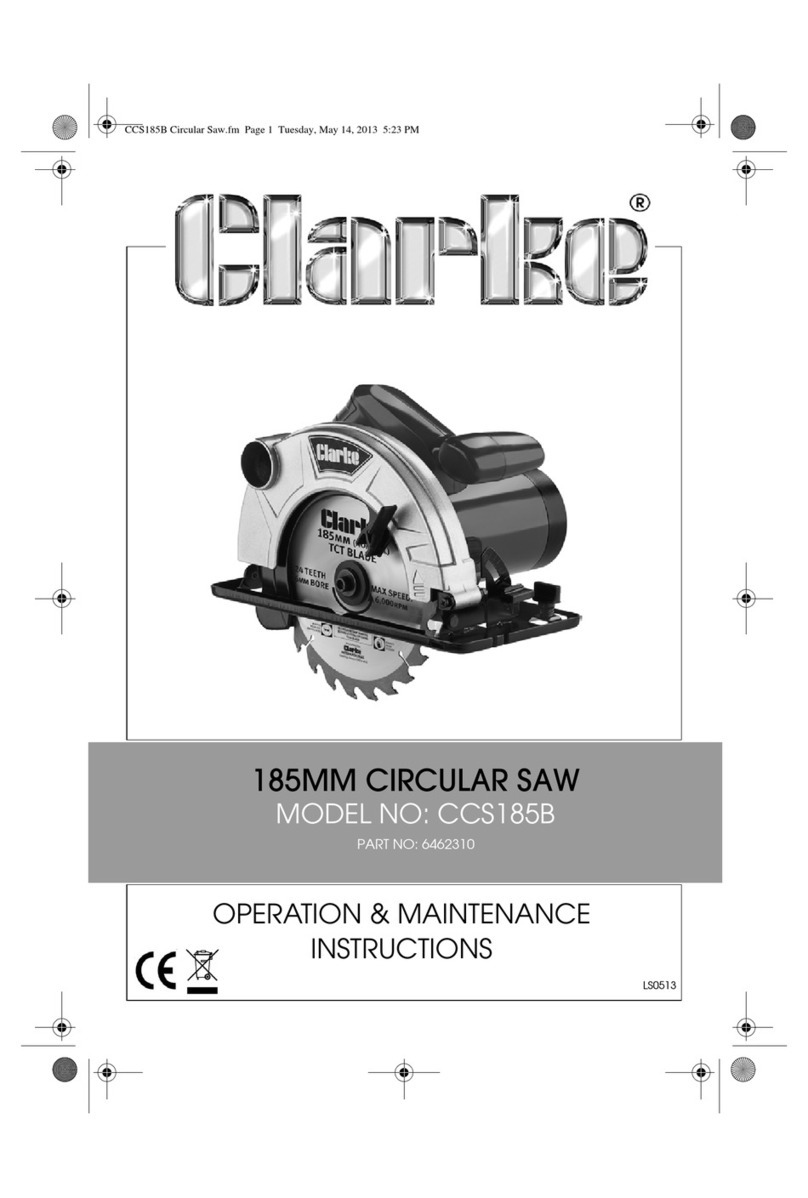
10. WEAR PROPER APPAREL. DO NOT wear loose clothing,
gloves, neckties, rings, bracelets or other jewelry that may get
caught in moving parts. Non-slip footwear is recommended.
Wear protective hair covering to contain long hair.
11. WEAR A FACE MASK OR DUST MASK. Sawing, cutting
and sanding operations produce dust.
12. DISCONNECT TOOLS before servicing and when chang-
ing accessories, such as blades, cutters, etc.
13. REDUCE THE RISK OF UNINTENTIONAL STARTING.
Make sure the switch is in the OFF position before plugging
tool into the power supply.
14. USE ONLY RECOMMENDED ACCESSORIES. Consult
the Operator’s Manual for recommended accessories. The
use of improper accessories may cause injury to you or dam-
age to the tool.
15. REMOVE ADJUSTING KEYS AND WRENCHES. Form the
habit of checking to see that keys and adjusting wrenches are
removed from the tool before turning ON.
16. NEVER LEAVE TOOL RUNNING UNATTENDED. TURN
THE POWER OFF. Do not leave the tool before the blade
comes to a complete stop.
17. NEVER STAND ON TOOL. Serious injury could occur if
the tool is tipped or if the cutting tool is unintentionally con-
tacted.
18. DO NOT OVERREACH. Keep proper footing and balance
at all times.
19. MAINTAIN TOOLS WITH CARE. Keep tools sharp and
clean for most efficient and safest performance. Follow in-
structions for lubricating and changing accessories.
20. CHECK FOR DAMAGED OR LOOSE PARTS. Check for
alignment of moving parts, binding of moving parts, loose
mounting and any other conditions that may affect its safe op-
eration. A guard or other part that is loose or damaged should
be properly adjusted, repaired or replaced.
21. MAKE WORKSHOP CHILDPROOF with padlocks, master
switches or by removing starter keys.
22. DO NOT operate the tool if you are under the influence of
any drugs, alcohol or medication that could impair your ability
to use the tool safely.
23. USE A DUST COLLECTION SYSTEM whenever possible.
Dust generated from certain materials can be hazardous to
your health and, in some cases, a fire hazard. Always operate
the power tool in a well-ventilated area with adequate dust
removal.
24. ALWAYS WEAR EYE PROTECTION. Any power tool can
throw debris into your eyes that could cause permanent eye
damage. ALWAYS wear safety goggles (not glasses) that com-
ply with ANSI safety standard Z87.1. Everyday glasses have
only impact resistant lenses. They ARE NOT safety glasses.
NOTE: Glasses or goggles not in compliance with ANSI Z87.1
could cause serious injury when they break.
25. DIRECTION OF FEED. Feed work into a blade or cutter
against the direction of rotation of the blade or cutter only.
26. DO NOT loan your tool to a neighbor or friend without pro-
viding him/her with the Operator’s Manual. Be sure he/she
learns the tool’s applications and possible hazards.
1. ALWAYS USE SAW BLADE GUARD, splitter and anti-kick-
back pawls for every through–sawing operation. Through–saw-
ing operations are those in which the blade cuts completely
through the workpiece when ripping or crosscutting. Always
be sure blade guard is tightened securely.
2. ALWAYS HOLD WORK FIRMLY against the miter gauge or
rip fence.
3. ALWAYS USE a push stick, especially when ripping narrow
stock. Refer to ripping instructions in this Operator’s Manual
where the push stick is covered in detail. A pattern for making
your own push stick is included on page 25.
4. NEVER PERFORM ANY OPERATION FREEHAND, which
means using only your hands to support or guide the work-
piece. Always use either the fence or the miter gauge to posi-
tion and guide the work.
WARNING: FREEHAND CUTTING IS THE MAJOR CAUSE
OF KICKBACK AND FINGER/HAND AMPUTATIONS. NEVER
USE THE MITER GAUGE AND FENCE SIMULTANEOUSLY.
5. NEVER STAND or have any part of your body in line with
the path of the saw blade. Keep your hands out of the saw
blade path.
6. NEVER REACH behind or over the cutting tool for any reason.
7. REMOVE the rip fence when crosscutting.
8. DO NOT USE a molding head with this saw.
9. FEED WORK INTO THE BLADE against the direction of
rotation only.
10. NEVER use the rip fence as a cut-off gauge when cross-
cutting.
11. NEVER ATTEMPT TO FREE A STALLED SAW BLADE with-
out first turning the saw OFF. Turn power switch OFF immedi-
ately to prevent motor damage.
12. PROVIDE ADEQUATE SUPPORT to the rear and the sides
of the saw table for long or wide workpieces.
13. AVOID KICKBACKS (work thrown back towards you) by
keeping the blade sharp, the rip fence parallel to the saw blade
and by keeping the splitter, antikickback pawls and guards in
place, aligned and functioning. Do not release work before
passing it completely beyond the saw blade. Do not rip work
TABLE SAW SAFETY
2

